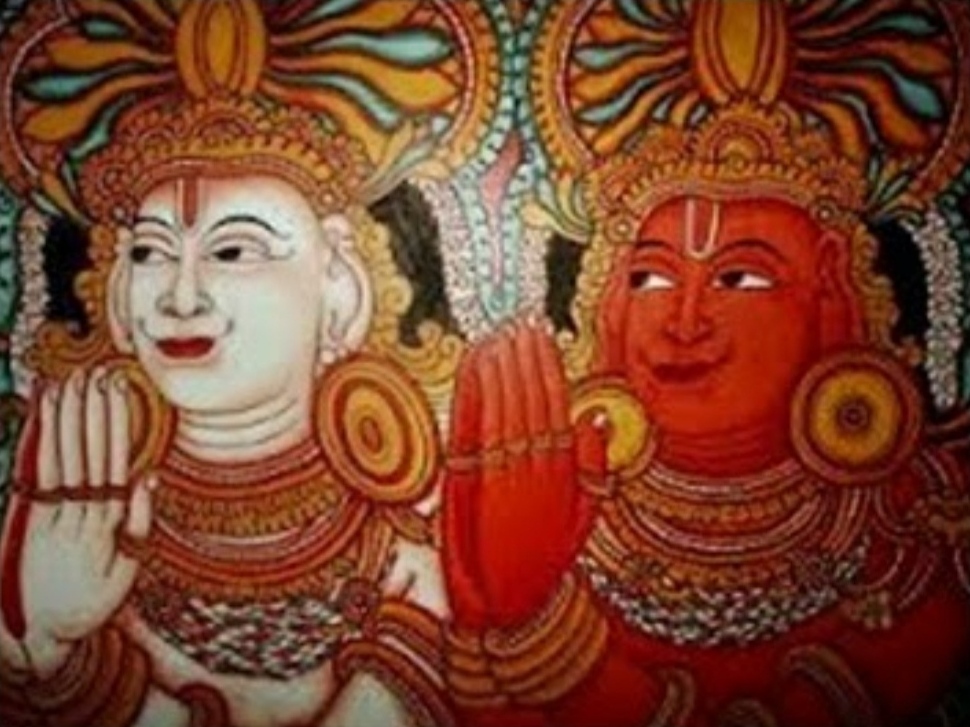
Divine twins
The Divine Twins are youthful horsemen, either gods or demigods, who serve as rescuers and healers in Proto-Indo-European mythology.[1]
Like other Proto-Indo-European divinities, the Divine Twins are not directly attested by archaeological or written materials, but scholars of comparative mythology and Indo-European studies generally agree on the motifs they have reconstructed by way of the comparative method.[2][3]
$_$_$DEEZ_NUTS#0__titleDEEZ_NUTS$_$_$
$_$_$DEEZ_NUTS#0__subtitleDEEZ_NUTS$_$_$
$_$_$DEEZ_NUTS#2__titleDEEZ_NUTS$_$_$
$_$_$DEEZ_NUTS#2__descriptionDEEZ_NUTS$_$_$
Scholar Donald Ward proposed a set of common traits that pertain to divine twin pairs of Indo-European mythologies:[4][5]
$_$_$DEEZ_NUTS#3__titleDEEZ_NUTS$_$_$
$_$_$DEEZ_NUTS#3__descriptionDEEZ_NUTS$_$_$
$_$_$DEEZ_NUTS#6__descriptionDEEZ_NUTS$_$_$
Name[edit]
Although the Proto-Indo-European (PIE) name of the Divine Twins cannot be reconstructed with certainty based on the available linguistic evidence, the most frequent epithets associated with the two brothers in liturgic and poetic traditions are the "Youthful" and the "Descendants" (sons or grandsons) of the Sky-God (Dyēus).[6][7][3]
Two well-accepted reflexes of the Divine Twins, the Vedic Aśvins and the Lithuanian Ašvieniai, are linguistic cognates ultimately deriving from the Proto-Indo-European word for the horse, *h1éḱwos. They are related to Sanskrit áśva and Avestan aspā (both from Indo-Iranian *Haćwa), and to Old Lithuanian ašva, which all share the meaning of "mare". This may point to an original PIE divine name *h1éḱw-n-, although this form could also have emerged from later contacts between Proto-Indo-Iranian and Proto-Balto-Slavic speakers, which are known to have occurred in prehistoric times.[8][9]
Role[edit]
Represented as young men rescuing mortals from peril in battle or at sea, the Divine Twins rode the steeds that pull the sun across the sky and were sometimes depicted as horses themselves.[10] They shared a sister, the Dawn (*H2éwsōs), who is also portrayed as the daughter of the Sky-God (*Dyēus) in Indo-European myths.[11] The two brothers are generally depicted as healers and helpers, travelling in miraculous vehicles to save shipwrecked mortals.[1] They are often differentiated: one is represented as a physically strong and aggressive warrior, while the other is seen as a healer who rather gives attention to domestic duties, agrarian pursuits, or romantic adventures.[3]
In the Vedic, Greek and Baltic traditions, the Divine Twins similarly appear as the personifications of the morning and evening star.[1] They are depicted as the lovers or the companions of a solar female deity, preferably the Sun's daughter but sometimes also the Dawn. In the majority of the stories where they appear, the Divine Twins rescue the Dawn from a watery peril, a theme that emerged from their role as the solar steeds.[12][3]
During the night, the Divine Twins were said to return to the east in a golden boat, where they traversed a sea[a] to bring back the rising sun each morning. During the day, they crossed the nocturnal sky in pursuit of their consort, the morning star. In what seems to be a later addition confined to Europe, they were said to take a rest at the end of the day on the "Isles of the Blessed", a land seating in the western sea which possessed magical apple orchards.[3] By the Bronze Age, the Divine Twins were also represented as the coachmen of horse-driven solar chariots.[11]
$_$_$DEEZ_NUTS#4__titleDEEZ_NUTS$_$_$
$_$_$DEEZ_NUTS#4__descriptionDEEZ_NUTS$_$_$
$_$_$DEEZ_NUTS#5__titleDEEZ_NUTS$_$_$
$_$_$DEEZ_NUTS#5__descriptionDEEZ_NUTS$_$_$
$_$_$DEEZ_NUTS#6__titleDEEZ_NUTS$_$_$
Legacy[edit]
In mythology and religion[edit]
The mytheme of the Divine Twins was widely popular in the Indo-European traditions; evidence for their worship can be found from Scandinavia to the Near East as early as the Bronze Age. The motif was also adopted in non-Indo-European cultures, as attested by the Etruscan Tinas Clenar, the "sons of Jupiter".[84] There might also have been a worship of twin deities in Myceanean times, based on the presence of myths and stories about pairs of brothers or male twins in Attica and Boeotia.[85]
The most prevalent functions associated with the twins in later myths are magic healers and physicians, sailors and saviours at sea, warriors and providers of divine aid in battle, controllers of weather and keepers of the wind, assistants at birth with a connection to fertility, divinities of dance, protectors of the oath, and founders of cities, sometimes related to swans.[3][86] Scholarship suggests that the mytheme of twins has echoes in the medieval legend of Amicus and Amelius.[4] In Belarusian folklore, Saints George and Nicholas are paired up together, associated with horses, and have a dual nature as healers.[42] The veneration of the Slavic saint brothers Boris and Gleb may also be related.[87][88]
In literature[edit]
Literary approaches to the mytheme of the Indo-European Divine Twins can be found in Zeus, a Study in Ancient Religion (1925), by Arthur Bernard Cook. The British scholar posited that some versions of The Dancing Water, the Singing Apple, and the Speaking Bird, collected from Greek and Italian sources, contained some remnants of Helen and her brothers, the Dioskouroi, in the characters of the wonder-children (triplets or two male/one female siblings) with astronomical motifs on their bodies.[89] The idea is reiterated in Angelo de Gubernatis's Zoological Mythology, Vol. 1.[90] The Italian scholar analysed the twins in a variant of The Boys with the Golden Stars format as the "Açvinau" (Asvins) of Vedic lore.[91]
$_$_$DEEZ_NUTS#8__titleDEEZ_NUTS$_$_$
$_$_$DEEZ_NUTS#8__subtextDEEZ_NUTS$_$_$
$_$_$DEEZ_NUTS#7__titleDEEZ_NUTS$_$_$
$_$_$DEEZ_NUTS#7__subtextDEEZ_NUTS$_$_$
$_$_$DEEZ_NUTS#1__titleDEEZ_NUTS$_$_$
$_$_$DEEZ_NUTS#1__subtextDEEZ_NUTS$_$_$
$_$_$DEEZ_NUTS#1__answer--0DEEZ_NUTS$_$_$
$_$_$DEEZ_NUTS#1__answer--1DEEZ_NUTS$_$_$
$_$_$DEEZ_NUTS#1__answer--2DEEZ_NUTS$_$_$
$_$_$DEEZ_NUTS#1__answer--3DEEZ_NUTS$_$_$
$_$_$DEEZ_NUTS#1__answer--4DEEZ_NUTS$_$_$